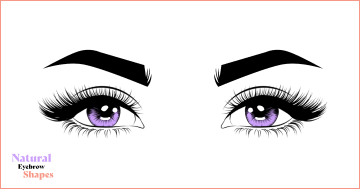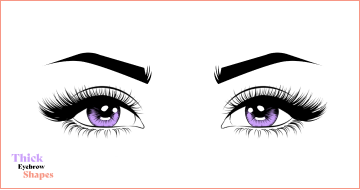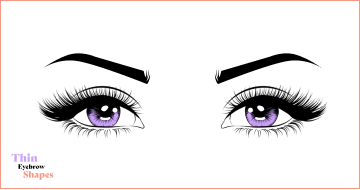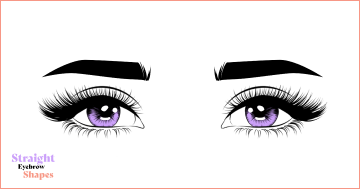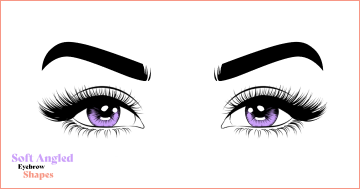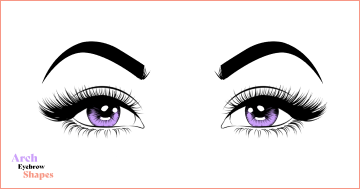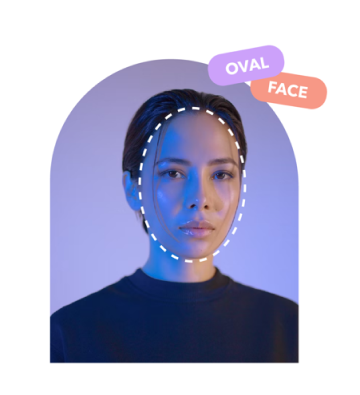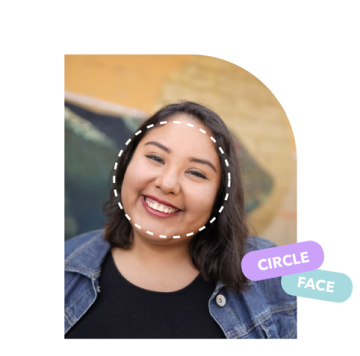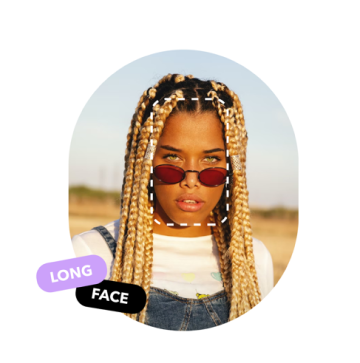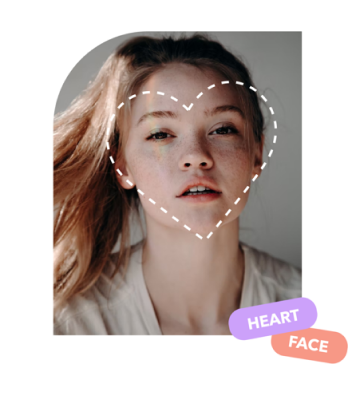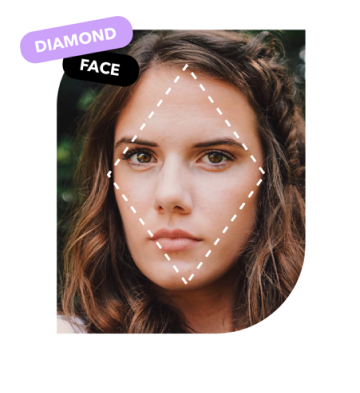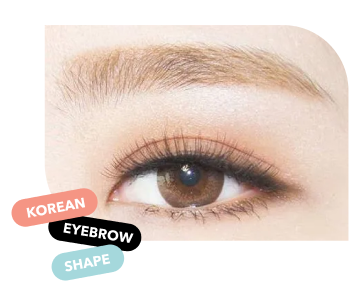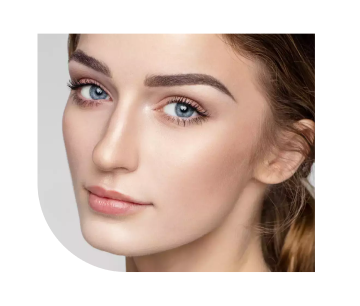Eyebrow Shapes Guide:
How to Find the Perfect Eyebrow shape for You
Factors In Eyebrow Shapes
There’s a lot that goes into brow shaping, with each section of your brow having a role. These are the key factors you’ll want to understand before you take to your tweezers.
- Softness vs sharpness: Brows can be more rounded and curved for a soft look or they can have strong angles and straight lines for a sharp, angular look.
- Front: The starting point of the front of the brows impacts how close together the eyes look, while its thickness can either frame or shadow the eye. A very fluffy front section can look youthful.
- Arch height: The arch is the main curve of the brow. Its height has a major impact on the face shape and overall demeanor. Take note of your lid space and the size of your forehead when deciding on arch placement.
- Arch location: Your arch can start a little closer to the center of the brow or out towards the tail. This can impact how open the eye looks as well as the overall angle of the face.
- Tail length and position: The “ideal” tail length can be found via eyebrow mapping, which we explain below. Shorter tails can pull the face upwards but they can also make the eyes seem smaller. Longer tails, especially if angled downward, can make the eyes seem a little sad.
- Density: This refers to how many hairs grow within your browse. Dense brows tend to be darker and more intense, while sparse brows can either look soft or too light and patchy. The feathery, brushed-up style that’s popular right now actually downplays density.
Types Of Eyebrow Shapes

There are all sorts of eyebrow shapes based on factors like softness vs sharpness, and the positioning of the front, arch, and tail.
- Classic/center-arched eyebrow shape: This is a moderately arched look with a shape that’s neither too sharp nor too soft. The arch starts a little off the center of the brow, closer to the tail.
- Modern/tail-arched eyebrow shape: Soft or moderately arched, with the arch starting a little further out towards the tail. This shape often lends an upward angle to the face, so it’s become much more popular in recent years.
- Flat/straight eyebrow shape: Minimal to no arch with overall straighter lines. This shape is most flattering when the face is already quite sharp and angular. Whether the brows are straight across or angled upwards will also impact your face.
- Curved/round eyebrow shape: No straight lines - instead, from the front through the arch the brows curve softly. Round brows add a lot of softness and youth to the face, especially when the arch is softer.
- S-shaped eyebrow shape: This shape is only appropriate if it’s your natural eyebrow shape. The very front of the brow curves a little upwards, usually with a classic arch but sometimes a rounded one.
- Thick eyebrow shape: Brows can be thick all over or only in particular areas like the front. Thick brows can look softer or more youthful, but they can also overwhelm the face.
- Thin eyebrow shape: Brows that are thin all over are largely associated with ‘90s or 2000s style. They can flatter those with small, delicate faces. We suspect (and dread!) that they might be having a comeback
- Steep/angled/high-arched eyebrow shape: Brows with a dramatic angle from the front of the brows up to the arch. This shape can make you look either fierce or surprised depending on your features and other shaping factors. It’s a great choice if your forehead is quite prominent.
- Soft-angled/minimally arched eyebrow shape: A soft, minimal arch that’s a little more present than a totally flat brow. Like a flat or rounded brow, it can also have a softening effect on the face.
- Tapered eyebrow shape: A brow shape where the front and middle are thicker while the tail tapers off to a thin point. This is often a sharper style with a medium or high arch.
- Short eyebrow shape: When the tail ends earlier than the eyebrow mapping line. This shape has an alt, upturned vibe that can be quite cool. That said, it can make the rest of your face seem disproportionately large if too short for your face shape.
- Extra-long tail eyebrow shape: When the tail of the brow extends past the eyebrow mapping line. This style was popular in the 1920s, but today it’s seen to pull the face downwards.
- Upward eyebrow shape: Brows where the tail tilts upwards, so it almost follows the line of the front of the brows. Sometimes referred to as the “fox brows” trend, this look is very popular for its ability to give the face an elongating lift.
- Natural eyebrow shape: The shape your brows gravitate towards naturally. You can still tweeze or fill them in minimally for a cleaner, slightly more symmetrical look. Chances are your natural eyebrow shape looks like one of the options listed above!
How To Determine Your Face Shape
Your face shape can help you make small decisions about the shape of your brows. The main face shapes are round, square, oval, long, heart, and diamond.
First, consider whether your face is sharply angled, which hints at a square or diamond face shape, or more rounded which encompasses all of the other face shapes.
Next, check your proportions, by measuring the width of your forehead, the center of the face, and your jawline. Also, take into account which sections of the face are longer and which are shorter.
You can also try face shape filters on social media sites like Instagram, which let you look at your face in relation to the main face shapes, or you can try analysis apps that do the measuring for you.
Eyebrows Shapes for Different Face Types
Once you determine your face shape, these are the most commonly recommended eyebrow shaping choices:
- Oval face: A modern or classically angled brow with a bit of arch and thickness is ideal, but you can also feel confident experimenting.
- Round face: A sharper brow with a medium to high arch and upward-angled tail will help add some structure. Don’t go extreme or the contrast might be too stark.
- Long face: Straight or rounded brows with a minimal arch help add balance and “break up” the length. You may want to go a little thicker to account for longer features.
- Square face: Soft, rounded brows with a medium arch will help add softness to the face while still adding some length.
- Heart face: A thicker medium-high arch and upward angled tail will give a lifted look, balancing the forehead without overwhelming the delicate features in the lower half of your face. Alternatively, you can go softer and more rounded, especially if you have bangs.
- Diamond face: Soft or rounded brows with a straight or modern arch are best. Make sure there’s still enough thickness to complement your cheekbones.
How to brow map
Brow mapping is the best way to figure out where your brows should start and end. It allows you to customize your brows based on your own unique features. This technique still offers room for creativity, since it doesn’t dictate thickness, softness, or height.

1. Front
To determine where your brows should start, take a brow pencil and hold it so it lines up with the center of your nostril and the tip of the outer corner of your eye. Where the pencil lands at the top is where the eyebrow should start. If you want, it’s okay to leave the eyebrows bushier and closer together near the front - the key is to avoid tweezing them too far apart.
2. Arch
Here there’s a bit of room to play around.
For a more modern look with an arch that starts a little closer to the tail, line up the pencil with the edge of your nostril and the outer end of your iris. Alternatively, you can line up the pencil with the tip of your nose to the center of your eye. Either measurement will place your arch a little off-center, for a soft but uplifted look.
If you prefer a high, classic arch that starts a little closer to the center of the brow, measure from the outer end of your nostril through the center of the eye.
3. Tail
Finally, line up your pencil with the end of your nostril and the outer corner of your eye. Where the pencil lands is where your brow should end.
Extreme Brow Mapping
If you want to take things a little further, you can also try extreme brow mapping to ensure perfectly symmetrical brows. You first follow these simple steps, and then you use a ruler or string to start comparing your brows to one another. In our opinion, though, brows should be sisters, not twins. Trying to force them into perfect symmetry is often more trouble than it's worth.Eyebrow shaping options
 There are a lot of different ways to shape your brows. You can fill them in to enhance their shape, remove hair to clean them up or combine both for a precise look.
There are a lot of different ways to shape your brows. You can fill them in to enhance their shape, remove hair to clean them up or combine both for a precise look.Just remember that it’s never a good idea to succumb to eyebrow trends that can have permanent repercussions, like the over-tweezed 70s tadpole brows. But all’s fair when you play around with brushing, shaving, or filling in since the results aren’t permanent.
Filling-In
We live in the era of thick, full brows, so learning to fill yours in should be a top priority. Makeup products like brow pencils, gels, and powders can create different sorts of effects, but their effect only lasts for a day.
More recently, eyebrow tattooing techniques like microblading and microshading have become quite popular. However, they’re expensive, painful, and their results last for years which means you’re in trouble if trends change or you don’t like the final result.
Hair Removal
Removing hair is useful for cleaning up or thinning out your brows.
Some methods, like tweezing and waxing, pull the hair from the root. Some hair will grow back within two to three weeks, but occasionally you may end up with bald spots. That’s why it’s important to be cautious with these kinds of methods. It’s best to only tweeze or wax areas where it’s clear the hair needs to go, like between the brows.
Shaving with a small brow razor is great if you want to try very extreme eyebrow shapes. The hair will grow back within a few days, so it’s not permanent and you don’t need to worry about mistakes.
Other Shaping Options
Eyebrow shaping covers more than just tweezing and coloring. You can brush your brows upwards for a fluffier look or off to the side for a dense, controlled look. Using a brow gel or soap can help you keep your brows in place for a day, while eyebrow lamination can keep them in place for a few weeks. Sometimes, simple brushing is also enough!
Essential tools used in eyebrow shaping
You have a lot of eyebrow shaping options, but we think the following tools are a must no matter which method you choose.
Brow Pencil
When it comes to shaping or filling in the brows, a brow pencil is one of the easiest tools to use.
Even if you don’t like to use brow pencils when doing your makeup, it’s still useful to have one when shaping your brows. You can use it to mark different spots when you’re eyebrow mapping.
Brow Comb
A brow comb will help you move your brow hairs around as you map, fill in, or tweeze. It may seem minor, but it gives you a lot of control.
Scissors
A pair of small eyebrow scissors can help if you discover that some of your brow hairs are too long. When you trim, just keep in mind the direction in which you’ll brush your hair on a day-to-day basis.
Hair Removal Tools
If you plan to eliminate hair, you’ll need some hair removal tools. A small eyebrow razor is useful if you’re nervous about making mistakes since the hair is guaranteed to grow back. If you’re confident that some hairs need to go, you can also use tweezers, wax, or thread to pull the hair from the root.
Lash Tint
Brow mapping is a painstaking process, especially if you discover your brows need to be filled in. Instead of having to brow map every day, the brow tint can help your brow shaping results last.
The gel tints the skin under the brows, allowing you to fill them in or adjust their shape. The results are totally water-resistant, and can last for up to a week!
Eyebrow Styles Around The World
Eyebrow styles and trends can change a lot from place to place, as much as they change from decade to decade.
In the West, current trends favor a feathered, softly-colored but thicker brow shape, but things are different in other parts of the world.
Korean eyebrow shapes are a great example. Korean style has a huge influence all over the world, and current K-beauty trends favor softer, straight, or rounded brows of medium thickness.
Many people of East Asian descent have a softer natural arch, so the K-beauty style definitely comes from that. The brow intensity, thickness, and tail length are all totally adjustable and can change with new K-beauty trends.
But there’s more to Asian eyebrow shapes than just the East Asian styles. South Asian and Middle Eastern eyebrow shapes often lean a little thicker and sharper.
Final Thoughts
Every single choice you make when shaping your eyebrow will impact the rest of your features. This can sound a little scary, don’t feel like you have to follow rules too closely. The key to understanding which brow shape works for you is to experiment and try different things.
That’s exactly why we recommend semi-permanent methods of shaping, like using a pencil or a brow tint, and trimming and shaving instead of tweezing while you’re still playing around.
The important thing is to remember that brow trends are fleeting, and often different from place to place. Take that as inspiration! Imagine what kind of message you want your brows to send to the world, and enjoy the shaping process!




